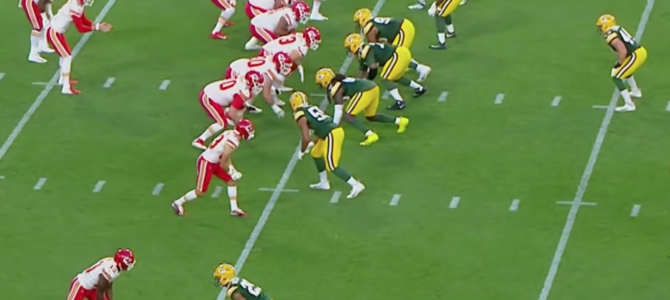Last week, CBS came to terms with NFL analyst and former Dallas Cowboys quarterback Tony Romo, giving him a $17 million contract. This is the most lucrative deal ever inked by a football color man. And it may be worth it. The most famous football announcer of all time was John Madden. Is Tony Romo poised to be the new one? And is the nature of TV coverage of the NFL about to change drastically?
There are a lot of reasons Tony Romo has become the hottest commodity in NFL announcing and why CBS, desperate to fight other networks in the sports space, wants him so badly. What has made him most famous is predicting, just prior to a play, what the offense (or even defense) will run. He treats his viewers to a very complex and often accurate view of how football works.
James Joyce wrote, “Truth is beheld by the intellect which is appeased by the most satisfying relations of the intelligible; beauty is beheld by the imagination which is appeased by the most satisfying relations of the sensible.” Over the last 50 years, NFL coverage on television has been defined by the latter.
NFL Films has long been the gold standard of the NFL’s presence on television. The slow motion shot, in which it invested heavily in the 1960s, of the spiraling football dropping into a receiver’s arms is how we think of the sport. Pure beauty. But now, viewers may be looking for something different. What Romo gives is a very deep dive into play calling — something that is obtuse and difficult for the average fan to understand.
Football is a complex sport. On any given down, 22 players have very specific jobs to do. For those who have never played on a high level, it feels like a ballet with no choreographer. Interestingly, owing to a video game named after John Madden, many under 40 do have a sense of the plays, having scrolled through and selected them. But still it’s obscure, and Romo makes it a bit less so.
But it’s not just Romo. The nascent XFL, which has put a good and pretty popular product on the field, is experimenting in the broadcast realm in some fascinating ways. For one thing, you can hear the coaches call in plays. You hear, “Detroit Zebra Z, GO!” or something like that, and then it’s explained to you that “Z” is the receiver at the top of the screen and you are told what he will do.
This takes a little magic out of the game. But it adds some value as well. What has always been a cacophony of crashing bodies becomes something closer to a machine. “Ah, I see,” we say as the gauze is lifted from the action on the field. That’s what they’re doing.
One aspect of all this that should not be underestimated is gambling. The XFL has leaned into gambling like Minnesota Fats at a local pool tournament. Live spreads are on the chryons, prop bets are bandied about. As more and more states legalize sports betting, the XFL is laying early claim to the territory. This helps to explain why the sport is moving away from beauty, as Joyce would say, and toward truth. Beauty is nice, but with two dimes riding on whether a running back will hit 87 yards, you really want truth.
That everything used to be better before is a common and true statement. But halcyon days of wonder cannot be replicated. The future of football on television is now. Yes, it feels like a video game, or looks more like one anyway, but let us not be too set in our ways. Football on TV is becoming more inside baseball. It’s not a bad thing. It opens the game up to us.
Another James Joyce quote is, “In the particular is contained the universal.” That’s the direction of contemporary football coverage on television. It will be more granular. Insight will replace awe, but awe will not be lost. There will always be in football tremendous and exquisite moments of the human form.
These new ways of showing and describing the details of football take little or nothing away from that. In fact, they add to it. In the public square, football has never been thought of as an intellectual game, but it is. These aren’t just grunts. We are learning that. And it’s a lesson that can make the game deeply more enjoyable.









